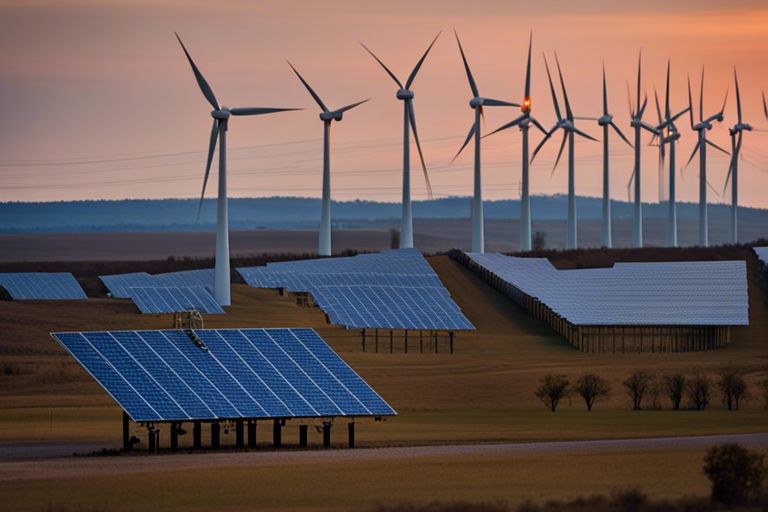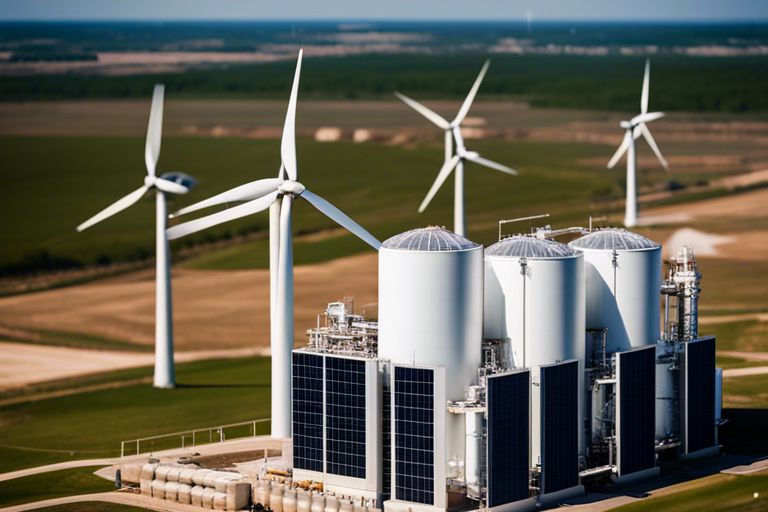Most of Oklahoma’s electricity generation is indeed fueled by coal, making it a crucial aspect of the state’s energy mix. Coal-fired power plants play a significant role in producing over half of the state’s electricity, but this reliance on coal comes with environmental and health concerns. While coal remains a dominant energy source in Oklahoma, there are ongoing efforts to transition to cleaner and more sustainable alternatives to reduce carbon emissions and mitigate the impact on public health and the environment.
Key Takeaways:
- Oklahoma’s Electricity Generation: The state relies heavily on coal for electricity generation.
- Coal as Primary Fuel: Oklahoma’s electricity generation is primarily fueled by coal-based power plants.
- Contribution to Energy Mix: Coal plays a significant role in Oklahoma’s energy mix, despite the growth of renewable sources.
- Environmental Impact: The reliance on coal raises concerns about the environmental impact of electricity generation in the state.
- Transition to Cleaner Sources: There is a growing push towards transitioning to cleaner energy sources in Oklahoma to reduce reliance on coal and address environmental issues.
Oklahoma’s Energy Mix
Historical Energy Sources
With a long history deeply rooted in the oil and gas industry, Oklahoma has traditionally relied heavily on fossil fuels for its energy needs. Coal has played a significant role in the state’s electricity generation, with coal-fired power plants powering a substantial portion of the grid for decades.
Current Trends in Electricity Generation
For decades, coal has been the primary fuel source for electricity generation in Oklahoma. However, in recent years, there has been a noticeable shift towards cleaner and more sustainable energy sources such as natural gas and renewables. This transition is driven by various factors including environmental concerns, technological advancements, and economic benefits. Coal’s dominance is gradually declining as a result.
Current data shows that coal still accounts for a substantial portion of Oklahoma’s electricity generation, but the use of natural gas and renewables is steadily increasing. This shift is not only driven by environmental awareness but also by the economic advantages that these cleaner energy sources offer. It is crucial for Oklahoma to continue diversifying its energy mix to ensure a sustainable and reliable power supply for the future.

Role of Coal in Oklahoma’s Electricity
Coal Consumption Statistics
One of the primary sources of electricity generation in Oklahoma is coal. According to the U.S. Energy Information Administration, coal accounts for a significant portion of the state’s electricity generation. In 2020, coal-fired power plants in Oklahoma produced approximately 40% of the state’s electricity.
Comparison with Other Energy Sources
When comparing coal to other energy sources in Oklahoma, it is crucial to understand the impact and contribution of each source. The table below outlines the key differences between coal and other energy sources, highlighting the strengths and weaknesses of each.
| Pros: Reliable and abundant | Pros: Renewable and environmentally friendly |
| Cons: High carbon emissions | Cons: Intermittent availability |

Economic and Environmental Considerations
The Cost of Coal Power
To understand the implications of coal as a primary source of electricity generation in Oklahoma, it is crucial to consider the economic factors at play. Coal power plants require significant investments in infrastructure and maintenance, which can impact electricity rates for consumers. Additionally, the fluctuating costs of coal itself can influence the overall affordability and stability of electricity generation in the state. Any decision regarding the role of coal in Oklahoma’s energy landscape must carefully weigh these economic considerations.
The Impact on Environmental Policies
To address the environmental impact of relying heavily on coal for electricity generation, Oklahoma must confront the implications for environmental policies and regulations. Coal combustion releases harmful pollutants such as sulfur dioxide, nitrogen oxides, and particulate matter into the atmosphere, contributing to air pollution and negative health effects. Coal also produces large quantities of carbon dioxide, a greenhouse gas that drives climate change. This necessitates stringent environmental policies to mitigate the environmental impact of coal power generation and transition towards cleaner energy sources.
The Future of Electricity Generation in Oklahoma
Renewable Energy Initiatives
Future initiatives in Oklahoma’s electricity generation sector are looking towards renewable energy sources to diversify the state’s energy portfolio. With advancements in wind and solar technologies, these sources are becoming increasingly viable options for energy production. Investments in renewable energy initiatives are growing, with plans to harness Oklahoma’s abundant wind resources to expand wind farms and increase solar installations across the state.
Potential Changes in Coal Usage
Usage of coal in Oklahoma’s electricity generation is facing potential changes as the state shifts towards greener energy alternatives. This shift is driven by environmental concerns, as coal-fired power plants are known to be significant contributors to air pollution and greenhouse gas emissions. Efforts to reduce coal usage and transition towards cleaner energy sources are being explored to meet sustainability goals and comply with stricter environmental regulations.
Summing up
Drawing together all the information presented in this analysis, it is evident that Oklahoma’s electricity generation is primarily fueled by natural gas, with coal playing a significant but diminishing role in the state’s energy mix. While coal-fired power plants have historically been important in providing electricity to Oklahomans, the increasing affordability and environmental benefits of natural gas have led to a shift towards using it as the primary source of electricity generation. As the state continues to diversify its energy sources and implement cleaner technologies, the future of Oklahoma’s electricity generation is likely to rely less on coal and more on cleaner and more sustainable alternatives.
FAQ
Q: Is Oklahoma’s Electricity Generation Primarily Fueled By Coal?
A: No, Oklahoma’s electricity generation is not primarily fueled by coal. While coal has traditionally played a significant role in the state’s energy mix, there has been a shift towards a more diversified energy portfolio that includes natural gas, wind, and solar power.
Q: What are the major sources of electricity generation in Oklahoma?
A: Natural gas is the largest source of electricity generation in Oklahoma, followed by wind energy. Coal still plays a role in the state’s energy mix but its contribution has been decreasing in recent years.
Q: How has the mix of energy sources in Oklahoma changed over time?
A: Oklahoma has been transitioning towards cleaner and more renewable sources of energy such as wind and solar power. This shift is driven by factors such as environmental concerns, technological advancements, and changing market dynamics.
Q: What percentage of Oklahoma’s electricity comes from renewable sources?
A: Approximately 40% of Oklahoma’s electricity comes from renewable sources, with wind energy being the largest contributor. The state has abundant wind resources which have made it a leader in wind energy generation.
Q: Does Oklahoma have any coal-fired power plants?
A: Yes, Oklahoma still has some coal-fired power plants, but their number and capacity have been declining as the state moves towards cleaner energy sources. Some plants have also been retrofitted to reduce emissions and improve efficiency.
Q: What are the environmental implications of Oklahoma’s energy generation sources?
A: While coal-fired power plants have higher carbon emissions and environmental impacts, the increasing use of natural gas and renewables in Oklahoma has helped reduce the state’s carbon footprint. Wind and solar power generation have minimal environmental impact compared to fossil fuels.
Q: How is Oklahoma supporting the growth of renewable energy?
A: Oklahoma has enacted policies such as renewable energy standards and incentives to support the growth of renewable energy. The state also benefits from federal tax credits for wind energy production, which has spurred investment in wind farms.




